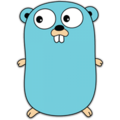A Beginner's Guide to Basic Syntax of Golang
Welcome to the world of GoLang!
This is a basic golang tutorial .
Whether you're a seasoned programmer exploring a new language or a beginner taking your first steps into the world of coding, GoLang offers a powerful and efficient toolset for building robust applications. In this guide, we'll walk you through the basics of GoLang syntax, from variables to functions, to help you get started on your journey to becoming a proficient GoLang developer.
1. Understanding Variables:
Variables in GoLang are declared using the `var` keyword followed by the variable name and type. Here's a simple example:
```go
var age int
age = 30
```
Alternatively, you can use the shorthand syntax for variable declaration and assignment:
```go
name := "John"
```
Remember, GoLang is statically typed, meaning once a variable is declared with a certain type, it cannot be reassigned to a different type.
2. Control Structures:
GoLang supports traditional control structures like `if`, `else`, `for`, and `switch`. Here's how they work:
```go
if age >= 18 {
fmt.Println("You are an adult.")
} else {
fmt.Println("You are a minor.")
}
```
The `for` loop in GoLang is simple yet powerful:
```go
for i := 0; i < 5; i++ {
fmt.Println(i)
}
```
And the `switch` statement can be used to replace long chains of `if` and `else if` statements:
```go
switch day {
case "Monday":
fmt.Println("It's Monday.")
case "Tuesday":
fmt.Println("It's Tuesday.")
default:
fmt.Println("It's another day.")
}
```
3. Functions:
Functions in GoLang are declared using the `func` keyword followed by the function name and parameters. Here's an example of a simple function that adds two numbers:
```go
func add(a, b int) int {
return a + b
}
```
Functions can also return multiple values:
```go
func divide(a, b float64) (float64, error) {
if b == 0 {
return 0, errors.New("cannot divide by zero")
}
return a / b, nil
}
```
Conclusion:
Congratulations! You've just scratched the surface of GoLang syntax. From variables to control structures to functions, GoLang offers a clean and concise syntax that makes it a joy to work with. Keep exploring and experimenting with the language, and soon you'll be building amazing applications with GoLang. Happy coding!


Nice
ReplyDelete